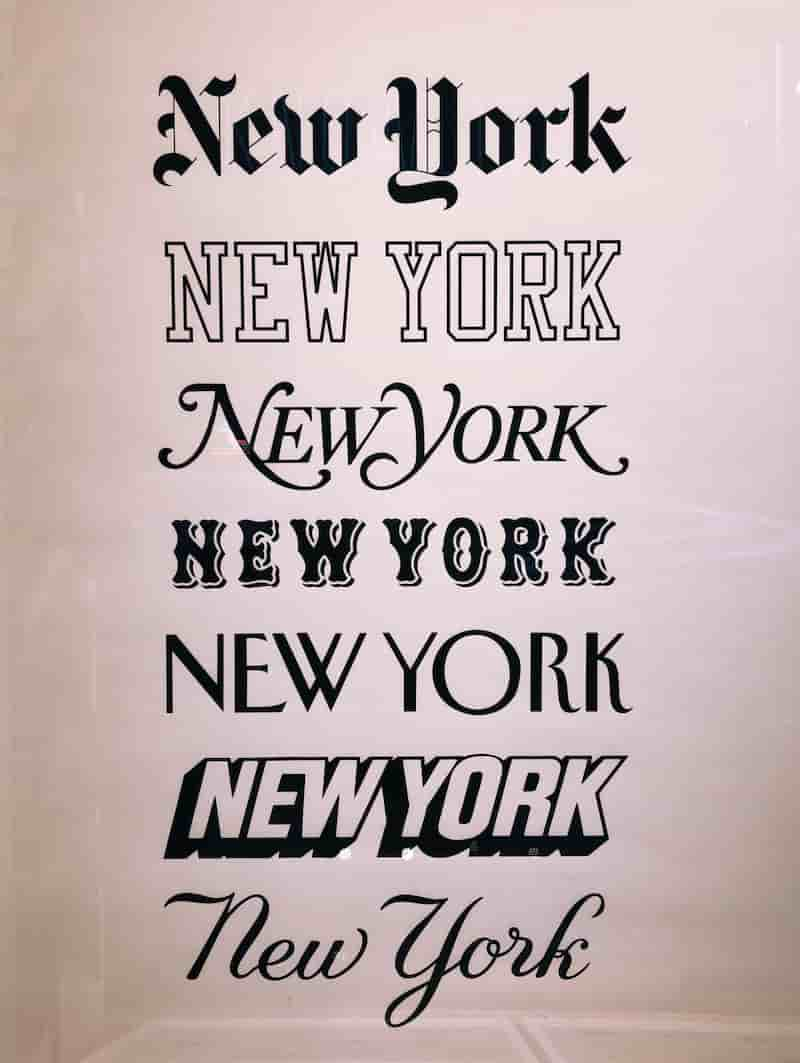6 Signs of a Strong Modern Brand Identity
If a business is to succeed, it needs to stay fresh in the minds of consumers. This means buyers will think of your brand when they see one of your products. But for too many organizations, brand identity is secondary.
If you’re reading this, you’re probably wondering how your business can avoid this fate. In this article, we’ll explore the meaning of brand identity. We’ll also talk about some of the tell-tale signs of a robust modern brand.
What is brand identity?

Every business has a brand identity. Put simply; it’s all the visual elements that a customer might associate with your brand.
This includes:
- Your logo
- The name of your business
- The colors, shapes, and layout found on your products or promotional releases
- The kind of written language you use
Of course, brand identity extends beyond visual factors on your products or website. Physical interactions with your customers also contribute to your identity. This includes staff uniforms or even your customer vanity number.
Brand identity is arguably more important than the products you release. You only need to look at some examples of well-known brands to see why. For example, Subway didn’t obtain success by producing the best sandwiches in the world. It achieved global domination with exceptional branding.
With all that said, how can you go about building a strong identity for your brand? The following signs should help you determine whether you’re moving in the right direction.
1. A strong name
It might sound obvious, but your business name is essential to your brand’s success. It’s something that you’ll want customers to share with their friends. It’s the first thing that potential business partners will see in a commercial proposal. In short, it can make or break your business.
That’s why it’s better to take a little time to find the perfect name rather than rushing into choosing a name. Changing your name later will be much more complicated, so it’s better to get it right from the start.
It’s arguably better for your name to relate to your services. In the early days of your brand, people will know nothing about you. Helping to point them in the right direction won’t do any harm.
With that said, your brand name doesn’t necessarily have to relate to your services. Apple is an excellent example of this. The name doesn’t shout “tech company.” But because of the strength of branding, people know exactly what it relates to.
Ultimately, the most important factor in naming your brand is standing out. Don’t discount a name simply because it seems “off the wall.” You won’t get very far with a dull, unmemorable name.
2. The perfect logo
Your logo might be more important than the name of your brand. Let’s go back to an earlier example, when you see the Apple logo, you immediately know who it belongs to. This is despite the lack of any names present on the logo.
There are many examples like this: McDonald’s golden arches and Ferrari’s prancing horse, for example. When handled correctly, images become synonymous with a brand. The perfect logo can hold the attention of customers. It should also convey the personality of your brand.
Are your products premium, silly, or something completely different? Consumers should start to form an impression before they interact with your products. For instance, if your products are affordable, but your logo looks premium, you’re sending the wrong message.
Unsure where to start with logo design? It may be worth looking at your successful competitors. How does their logo convey the personality of their brand? Of course, you shouldn’t copy a design, but there’s no harm in finding a little inspiration. The right logo can have a real effect on your brand’s reputation, increasing the worth of your brand’s reputation.
3. The right color palette
Color is another extremely important element of your brand identity. Ask yourself which colors best represent your brand. For example, if you’re selling perfume, you might choose a more pastel palette. On the other hand, a law firm might choose a more traditional black-and-white color scheme.
Different colors can invoke different emotions and influence a customer’s journey. Let’s look at a few examples:
- White: a sense of space or cleanliness. This might be a good fit for a business that offers cleaning products or healthcare.
- Red: a feeling of romance or comfort. A good choice for a business that focuses on relationships.
- Orange: happiness or a sense of energy. This could fit a brand that focuses on exercise and sports.
- Blue: often associated with cool temperatures or tranquility. This would perhaps suit a brand offering spas or skin care.
It’s unlikely that you’ll only stick with one color. But when mixing colors together, consider how the different colors work together. It’s not advised to use colors that convey conflicting emotions.
There’s no harm going directly to customers if you’re unsure. Conduct a focus group and test out different color schemes. This way, you’ll have a clearer idea of which options customers respond to favorably.
Remember to form a strong sense of brand visibility. Colors need to be consistent. Your website’s color scheme should match your packaging and other materials that you release.
4. A green approach
Customers are becoming increasingly concerned about environmental issues. In fact, a study by Statista about packaging components that make consumers want to shop from brands online found that nearly 50% of customers expect sustainable packaging. These numbers seem only likely to increase as climate change continues to feature in the news.
That’s why you must consider sustainability in your brand identity. This could include changing the materials you use for products. Or changing the imagery that you use in your materials.
ESG Performance Analytics can help you measure the environmental aspects of your business.
5. An excellent website
It’s fair to say that businesses have tapped into the increasing number of people online. If this is the case for your organization, it’s important to remember that your website is an important part of your eCommerce brand identity.
Most people will look to your website first to learn more about your brand. If handled correctly, customers can start absorbing your brand from this early stage.
But for this to happen, your website must be consistent with your brand image. Colors, typography, and language must align with your products and advertising. So, look at your website. Does it correspond with your brand identity? If not, you may need a website redesign guide.
6. Effective typography
The way you use text is arguably just as important as color. The font that you use will say a lot about your brand. As with color, poor typography can convey the wrong message about your brand.
There are five different font families. Each will say something different about your brand. Let’s take a look at each option.
- Script: if you want to express grace and elegance, this may be your font. This font family is generally associated with luxury brands.
- Decorative: this is arguably the most “fun” font style. The decorative style would suit a business that wants to present itself as laidback or entertaining.
- Serif: the most formal and traditional font family. It’s often found in professional journals and academic articles.
- Slab Serif: this font is often used to make a statement. It’s favored by car brands and technology companies.
- Sans Serif: a simple and easy-to-read option. Sans serif is often used by tech companies.
There is, of course, no right option for choosing a font. Look at each font family and choose an option that suits your business.
Put brand identity at the heart of your business
Some things in business are simply common sense. For example, finding the right sales coaching style is integral for training your sales team. Having a clear brand identity should be viewed with the same importance.
A strong identity allows you to stay in the minds of consumers long after they’ve interacted with you. It can help bring in new customers, produce future sales, and boost your growth.
But why do so many businesses overlook this crucial factor if this is the case? The answer is probably because building a strong identity takes work. Many organizations would rather spend time on product design. These businesses, however, don’t usually get very far.
If you take one thing away from this article, it’s that consistency is key. Your fantastic website color scheme makes little if it doesn’t match your product packaging. Take time to ensure that your identity aligns with the image you want to portray.
So, start putting brand identity at the heart of everything you do. If handled correctly, you’ll find the rewards far outweigh the effort.
Tags: Business Reputation Marketing, Personal Branding, Social Media Marketing.




